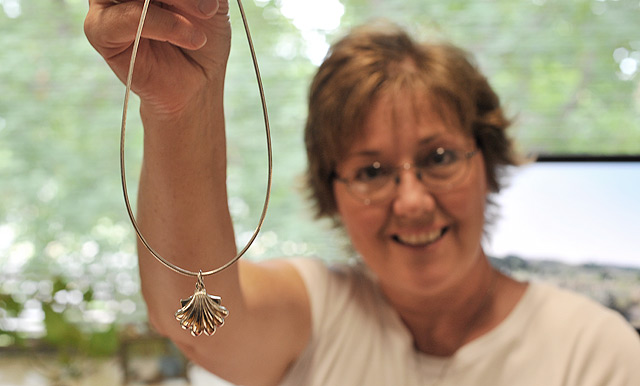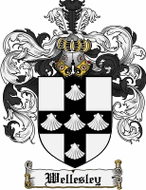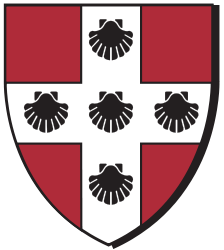McQueeney’s Pilgrimage Leads Her to a Wesleyan Connection

During a 100 kilometer pilgrimage across Spain in June 2010, Kristin McQueeney purchased a silver scallop shell slide to wear on her necklace. Little did she know that shell carried a coincidental Wesleyan connection.

The scallop, which represents the pilgrimage across Europe to Santiago de Compostela, also appears on the Wesleyan crest.
According to Valerie Gillispie, assistant university archivist, the Wesleyan crest is based on the Methodist founder John Wesley’s family coat-of-arms. Wesley was a descendent of the Wellysleye/Wellesley family, whose crest bears a cross decorated with five scallop shells.
“Those who made pilgrimages across Europe, or from the port to the holy land or to Rome, could wear the scallop shell as a medallion of honor, or have it displayed on their shield. The Wesley’s apparently were so eligible,” says John Driscoll, alumni director.
The Wesleyan crest is almost 60 years old. In the early 1950s, the Chicago Alumni Club hoped to secure a place for a coat of arms in the club’s gothic “great hall.” Prominent Wesleyan alumni Daniel Woodhead ’34 and John Baird ’38 reserved “the last and most prestigious spot” over the fireplace – however, they ran into one problem.
“Wesleyan had no coat of arms nor heraldic shield. We had a side visage of John Wesley, but not coat of arms,” he says.
So, the alumni, with the blessing of President Victor L. Butterfield, contracted with the Newbury Library in Chicago to have the research done into the history of the John Wesley. In 1953, Butterfield approved the shield design, which is used today.

McQueeney, administrative assistant in the Theater Department, began her walk in Sarria, Spain and walked to Portomarin, then Melide, then Rua, and finally into Santiago de Compostela in 4 and 1/2 days. She purchased the scallop in Santiago.
“I knew that the scallop shell was the symbol of the pilgrimage; however, didn’t know of any Wesleyan connection until John mentioned it to me during a recent conversation,” McQueeney says. “My reaction was, ‘wow that’s cool. I had no idea.'”
McQueeney walked her second pilgrimage this summer in Rome, Italy.

